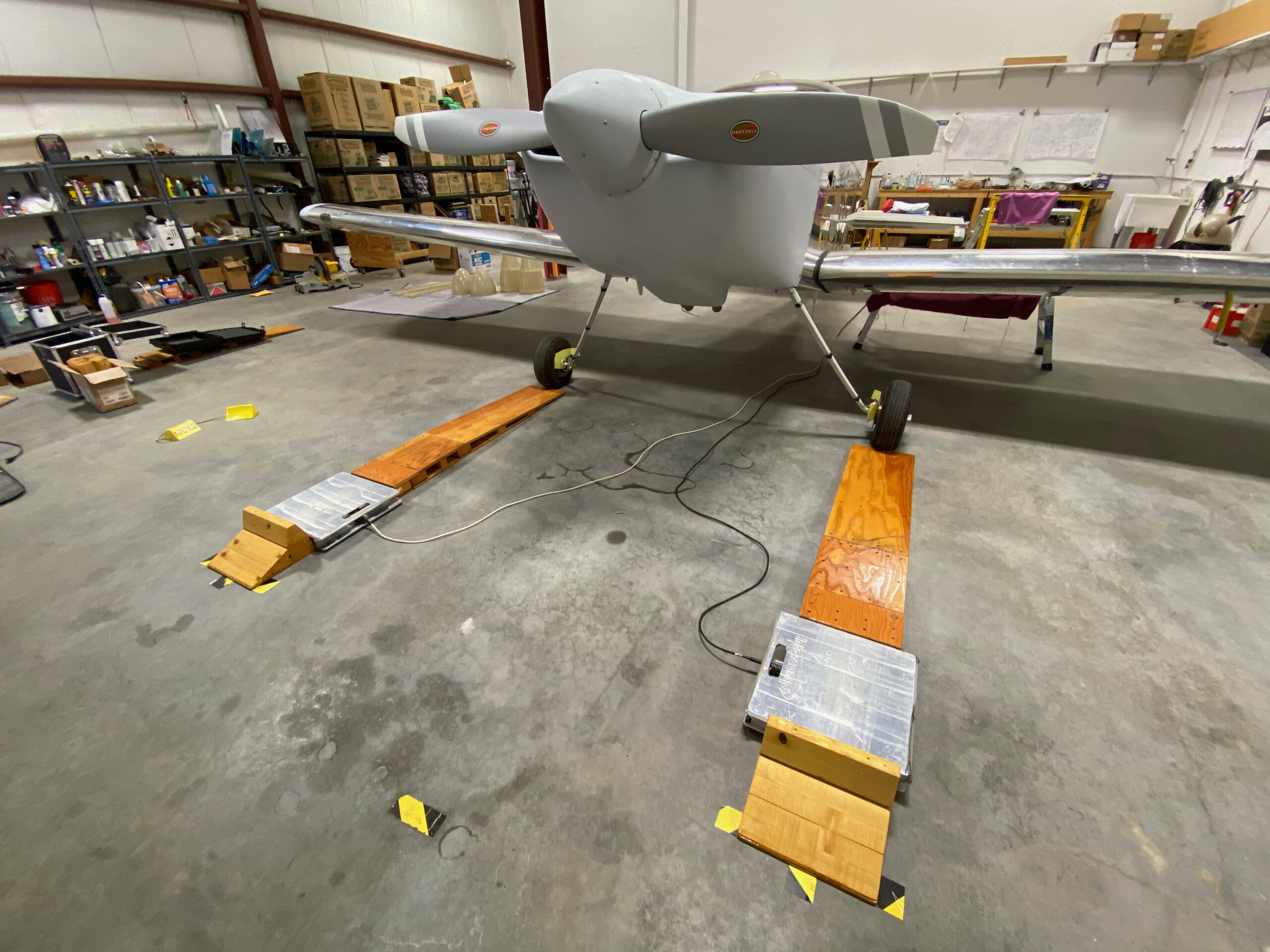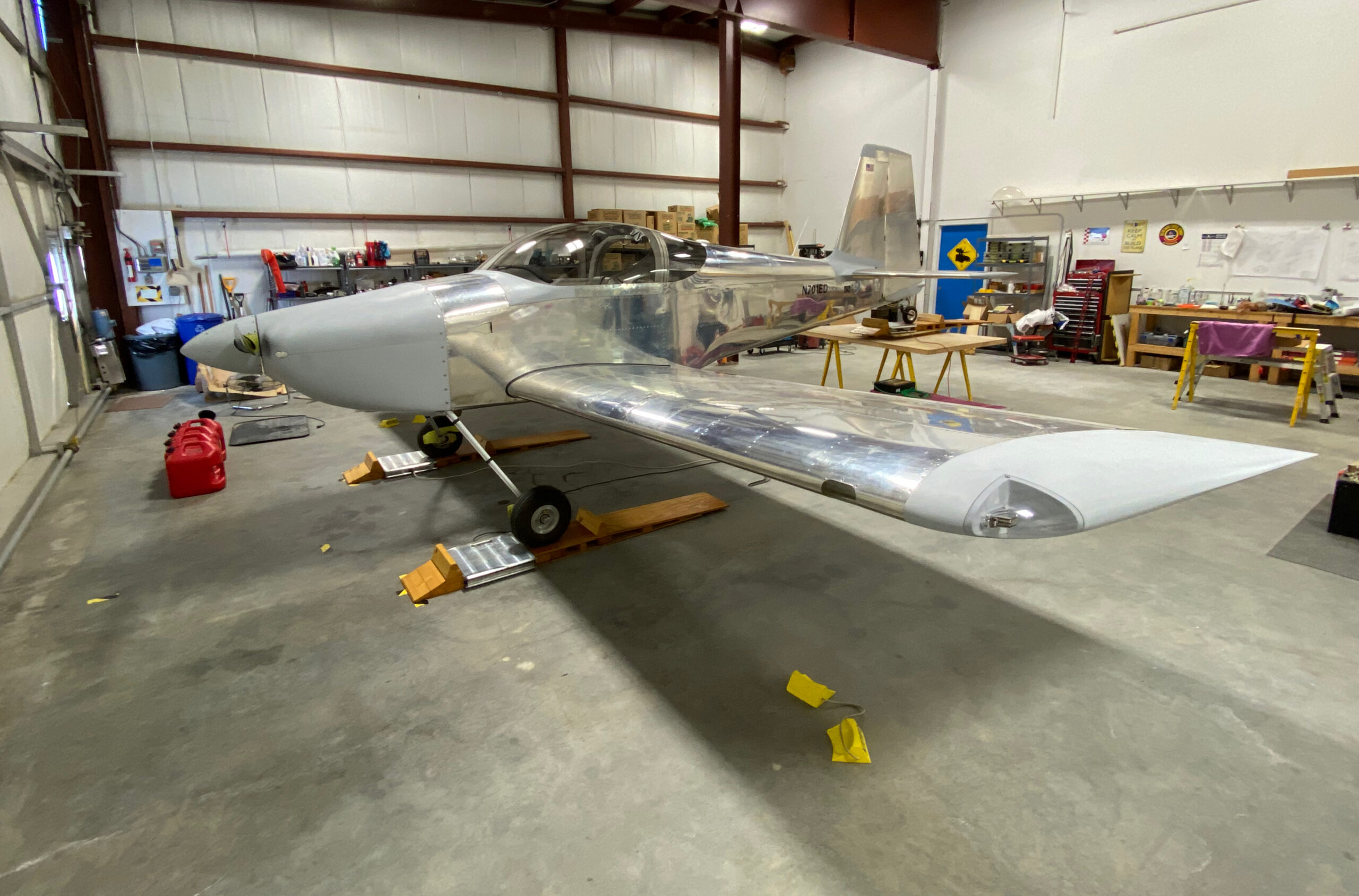One of the last significant tasks before inspection is weighing the airplane to determine its Basic Empty Weight (BEW) and Center of Gravity (CG). An accurate BEW and CG are critical to keeping the airplane within its weight and CG limits. Fortunately, EAA Chapter 106 has a great set of ramps and digital scales that are available to members for airplane weighing…very cool!
I prepped the airplane by emptying the fuel tanks and topping oil up to 8 quarts, then set up the ramps and scales.
The airplane must be in level flight attitude, so Ellen and I rolled the airplane onto the ramps and leveled it by adjusting tire pressure in the main wheels and adding shims under the tailwheel scale.
The weighing process was simple. Roll the airplane on the scales, roll it off, record weight and repeat to confirm the numbers. Easy-peasy!
While the airplane was level we also measured main wheel and tailwheel distances from the wing leading edge, which is 70 inches behind the W&B datum defined by Van’s. With that number and our measurement, we were able to compute the arms for each wheel and so compute the empty center of gravity.
The results –
- Right wheel – 535 lbs
- Left wheel – 530 lbs
- Tailwheel – 62 lbs
- Basic empty weight – 1127 lbs
- Center of gravity – 79.4 inches aft of datum.
All in all, I’m pretty happy with the result. I had hoped for basic empty weight to be closer to 1100 lbs, but we made conscious decisions to add things like a constant-speed propeller, nicer seats and carpet that add weight but improve the airplane for travel.
Next step…DAR inspection!



